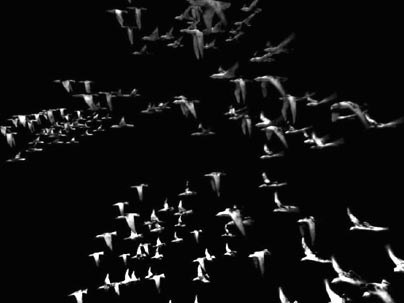Poised at the intersection of art and technology, "The Body +," a retrospective video compilation of performance pieces that use technology as an artistic tool, will be on view through May 1 at the MIT Museum.
The title is intended to indicate the collaboration between the dancer and technology in a performance, as in "body + light," or "body + camera + sound + computer." The exhibit is an offshoot of the Ideas in Motion Conference, which in turn is part of the 2005 Boston Cyberarts Festival, a biannual festival of art and technology.
According to curator Nell Breyer of MIT's Center for Advanced Visual Studies, the nine choreographers whose work is included in this video compilation employ technologies ranging from simple video cameras to high-tech medical imaging and motion capture.
The oldest piece was choreographed by Trisha Brown in 1966 and features a projector mounted on the back of a performer, with the film projected around the performance space. The newest was produced by dance group Troika Ranch this year using sensors on dancers' bodies to trigger interactive 3-D imagery. In between is the work of such innovators as Marc Downie, a graduate student in MIT's Media Laboratory and the performance artist Sterlarc, whose work "Stomach Sculpture" uses medical imagery to show the inside of that organ, eliciting squeals of "ewww" from at least one 7-year-old viewer.
Combining dance and technology is not new, said Breyer, who is also a coordinator for the conference. But the increased availability of technology means that virtually all major choreographers are now making media part of their work. Technology, she said, needs to be used with a "strong degree of integrity," truly as a part of the performance, and not just for show.
This view was discussed at the conference, where participants quizzed each other on whether the inclusion of technology was really necessary and "organic" in their pieces.
The exhibition also marks a greater effort by the MIT Museum to "collaborate with groups around the MIT campus and show their work," said Stephanie Hunt, Learning Technologies Coordinator at the MIT Museum.
A version of this article appeared in MIT Tech Talk on April 27, 2005 (download PDF).






